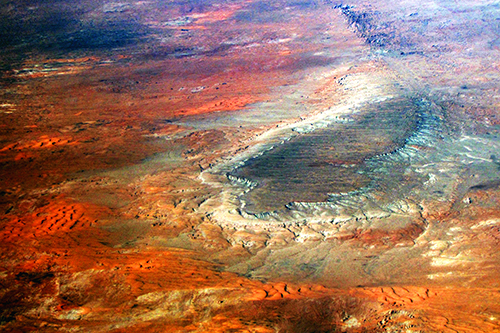Den Adler
When did I consider myself an artist?
My first “serious” photography came in 1957 during an eighth-grade trip to Wisconsin Dells (I was 13), when two friends and I, my mother’s Kodak box camera in hand, staked out a restaurant where a pretty classmate had walked in. We waited for about an hour, and when she finally came out I was looking at something else, so by the time I moved the camera into position and pressed the shutter the photo was blurred. That summer Mom let me take the camera to camp, and I got some good scenic shots at the lake as well as portraits of staff members and fellow campers. I decided photography was a good way to document life and the places and people I saw. I’m not sure when I first considered myself an artist.
A perfect day?
On a perfect day, I’ll see something I want to photograph, and I’ll have my camera along and have the time to use it. This can vary greatly—on a drive, a train (or plane) trip, a bike ride or walk, or even looking out the window or at the sun shining through it highlighting something in our house.
Things that inspire me:
In my 2000 class reunion booklet, I wrote, “I photograph flowers, trains, architecture, scenery, pretty women, signs with the number 13, and whatever else captures my eye.” That’s still accurate, though I could now add abstracts to the list. Various colors, shapes, and textures attract my eye—forms in nature and in architecture as well as other art. I’ve been known for years as a train photographer, but I’ve always photographed more than trains, and in the past decade or two I’ve cut back on trains in favor of people, scenery, and architecture, as well as other art.
Visualizing beforehand?
I sometimes visualize a finished photograph when I work, but not always or even often. Usually I let myself be surprised at what I get. One perfect example of when I did visualize the possibilities was early one morning in October 2011 when I was photographing one of the lions at the New York Public Library. I had taken about five shots of how the sun emphasized its head with people standing and sitting in the shade at the base of the sculpture when I noticed a man with a black fedora-type hat walking my way. I realized that if he stayed on his path he’d provide a silhouette against the sun-lit base of the lion, so I waited and pressed the shutter as he passed. I checked the screen on my camera and it showed I had timed my shot perfectly, so I deleted all the previous photos of the lion. A few months later that shot won a judges’ choice award in the 2011 OpenHouseNewYork “Focus on Architecture” contest. (A print of that image will be in my March 29 to April 24 exhibit.)
Material limitations?
When I was young my family didn’t have the money to buy me a good camera, so I was limited in low light or action scenes by the older, slower cameras. In high school I bought a Kodak Brownie Fiesta, which worked pretty well—I still have slides (including of our wedding—from that camera. But in 1969 I bought my first 35mm SLR. My images got better. Around 2006 I started my switch to digital. I don’t use flash a lot, preferring the softer look of natural light. Better cameras can always help, but I don’t worry about that. I use what I have and if I lose a shot or one doesn’t turn out as I hoped, that’s too bad, but in the scheme of things it doesn’t matter much. There are many more important things in life.
Great influences:
I have been influenced greatly by other photographers as well as by painters. I am constantly looking at images, in newspapers, books, and magazines, on postcards, in museums and at art shows. I took my first photography class in the Fall of 1970, a few months after I moved to Janesville. Shirley Krempel taught that class at Blackhawk Tech, and I recently reconnected with her. I still have photographs I took for that class. Shirley got me started on a search for more artistic photography. My nature-photographer friend Ken Tapp (to whom I’m dedicating my 2019 exhibition) has taught me to be more patient in the search for images. Eye-pleasing images are what impress me, and I’ve found those by amateur as well as professional photographers. It’s the images that matter, not the person who made them.
Choosing art:
All art—whether images or words—comes from our brains. It is always we who choose art; it has no power to choose us. No matter how powerful the impulse is, it comes from our brains, our reactions—the ideas and attitudes about the images or impressions that we have about what we see or think. If art chose us, we’d all be photographing or painting or writing the same things. It doesn’t happen that way.
If not an artist, what?
I don’t support myself by photography. I don’t even do weddings. I like the freedom to choose what and when I want to photograph. I have taken short-term photography jobs, but very seldom. I also write. In 2007 I published a novel, “To Become a Priest—a Love Story.” Now I write mostly essays, including a periodic column called “Essays from Images” in an online writers’ newsletter published through the University of Wisconsin-Extension.
Goals:
My goals as a photographer are to capture images that please me—by their colors, shapes, or meaning. I like to share them through exhibits in hopes that others will enjoy them too. Because I don’t make a living from photography, it doesn’t matter financially whether or not my work sells, though I am pleased when images I’ve made are hanging in others’ offices or homes.



